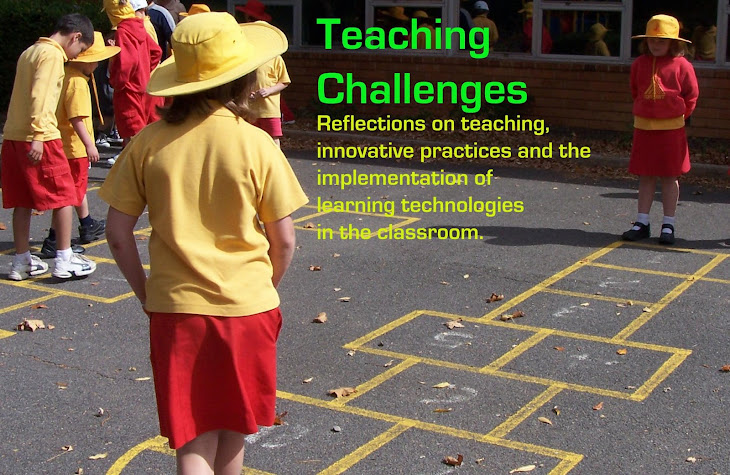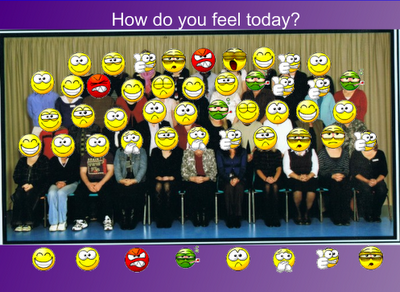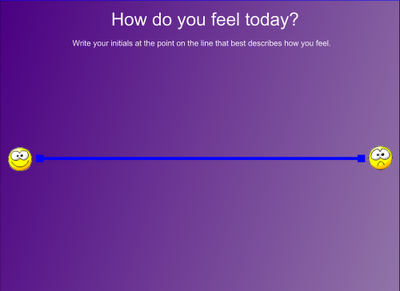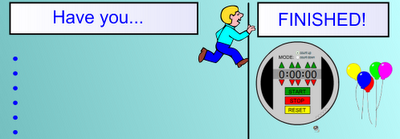I want to pause for a moment to brag about the wonderful kids I teach. They are a lovely group of kids with an interest in learning and willingness to focus on a task and get the job done. I am impressed with how self-directed they are and also with how well they cooperate together. For the most part, I can trust them to do the right thing. The teachers who have been taking my classes while I do courses and executive duties tell me that they are delightful to work with.
On Monday I arrived at school to this message:

And this morning I was greeted by a student who had written me a poem.
I feel so spoilt to have the pleasure of working which such great kids.
Fun This Week:ABC3 PromoIn Australia we are in the process of getting a selection of new free-to-air television channels. One of these will be ABC3, a television channel aimed at programming for children. They are currently calling for primary school students to create promo videos for their channel.
I was recently challenged by the need to create more opportunities for students to write for a real purpose and audience. When I saw this competition, I thought it would be a great opportunity for students to write/create a persuasive text for a real purpose.
This week students from both Year 4 classes formed small groups and began thinking about and planning their approach to this task. They are feeling very motivated by this project and (in my opinion) should be able to create some high quality video promos.
For more information about the competition, visit
ABC3 By me.
Listening for the Author's VoiceLast weekend I was reflecting on how I teach my students to write. I was going through the First Steps Writing resources and considering what I'm doing well, what I'm not doing well, and how I want to implement First Steps further in my writing program. One thing I realised I wanted to put greater emphasis on, is the concept of personal voice.
Trent Lorcher at
Bright Hub provides some tips on how to explain 'personal voice' to students. I shared this with my students and then we investigated the voice of different authors we know using the following chart:

Students then went on to do their reading for the week and jotted down notes about the voice of their selected author. They discussed this further with their Cooperative Reading Group on Tuesday. The next step is to help children to get a better sense of their own voice.
Bringing Dance to LifeWe are going to perform some dances for our assembly next week. The students chose from two themes - 'flight' or 'fireworks'. We explored these themes earlier in the term and students had a chance to create dances in small groups. We are now asking them to fine-tune a dance to share with the whole school. They began practising their dances and we pulled out some scarves for students to use as costumes. It's beginning to look really effective and the kids are keen to perform next week.
WakakiriThe Year 5/6 students performed in Wakakirri this week and did a really great job. Their dance was spectacular as were their costumes and backdrop. The rest of the school got to watch it on Monday afternoon.
Textiles and Design Homework Projects
Students have been handing in homework projects they created using their textile and design skills. Don't they look great? We plan to share these with the school community at the assembly next Friday.
Place Value and Multiplication TablesThis week we explored place value in Maths and practiced multiplication tables. There were some great interactive websites for this. The
Crickweb Maths Teacher Toolkit had some handy
place value activities. Woodlands have some
great interactive times tables games. My favourite for using on the interactive whiteboard is
Hit the Button. We also made our own whiteboard page. Students gave some digits from their phone numbers and I wrote these up on the board. We then ordered these four-digit numbers from smallest to largest, simply by touching and dragging them. You've got to love having an interactive whiteboard!

Students also played with a range of other manipulatives to practice their tables and place value including dice, tables wheels and wind-ups. They rotated through the activities over the week.
Making Movies - Second lesson
Students continued making their movies this week and some finished them, ready to share with parents at our upcoming Learning Journeys. We had a bit of a set-back this week, as many students wanted to include songs, and we needed to find something appropriate that wasn't protected with copyright.
I need to find some Creative Commons songs and collect them together into a common pool that students can select from. That will be one of my jobs this weekend. Any suggestions? I'm also looking for a site that collects "kid safe" songs and won't be blocked by my school.
Senior Sport
In Terms 2 and 3 students in Years 3-6 select a sport to attend on Friday afternoons. Options include things like tennis, indoor soccer, aerobics, circus and ten pin bowling. This term I have been going along to supervise ten pin bowling. The kids love it and are so supportive of one another. It's a great way to end each week.


























